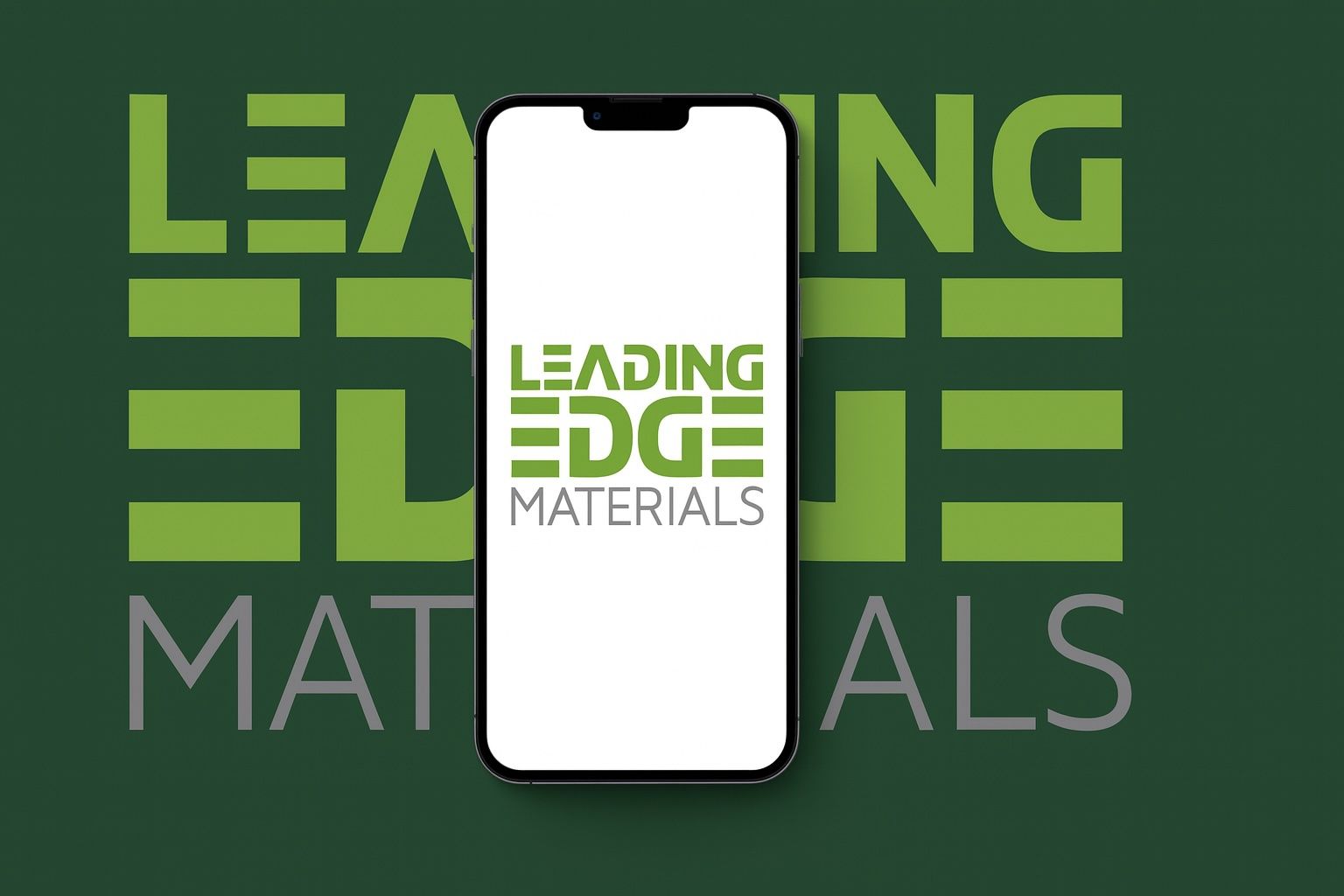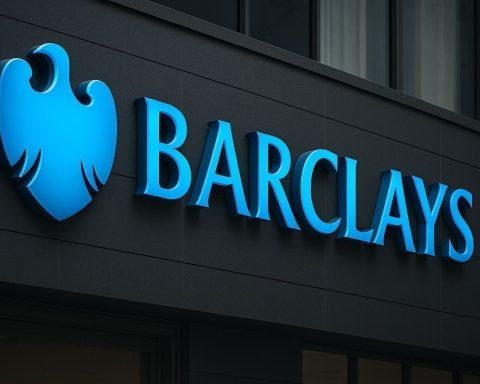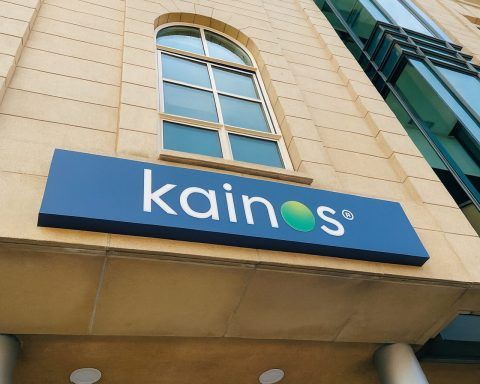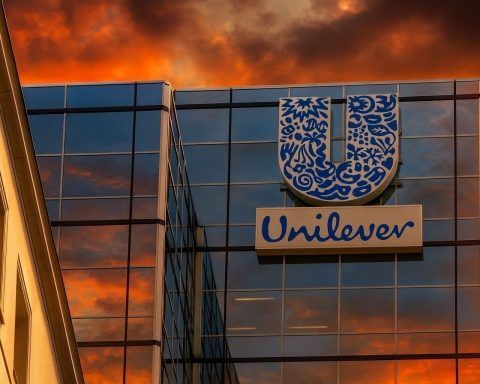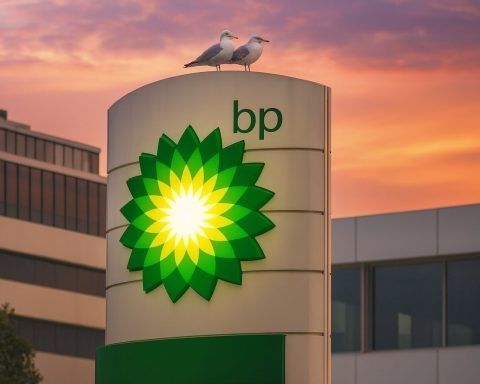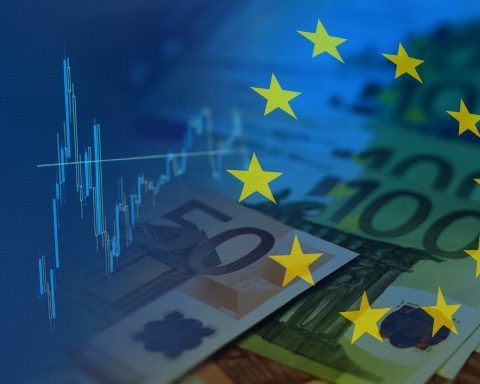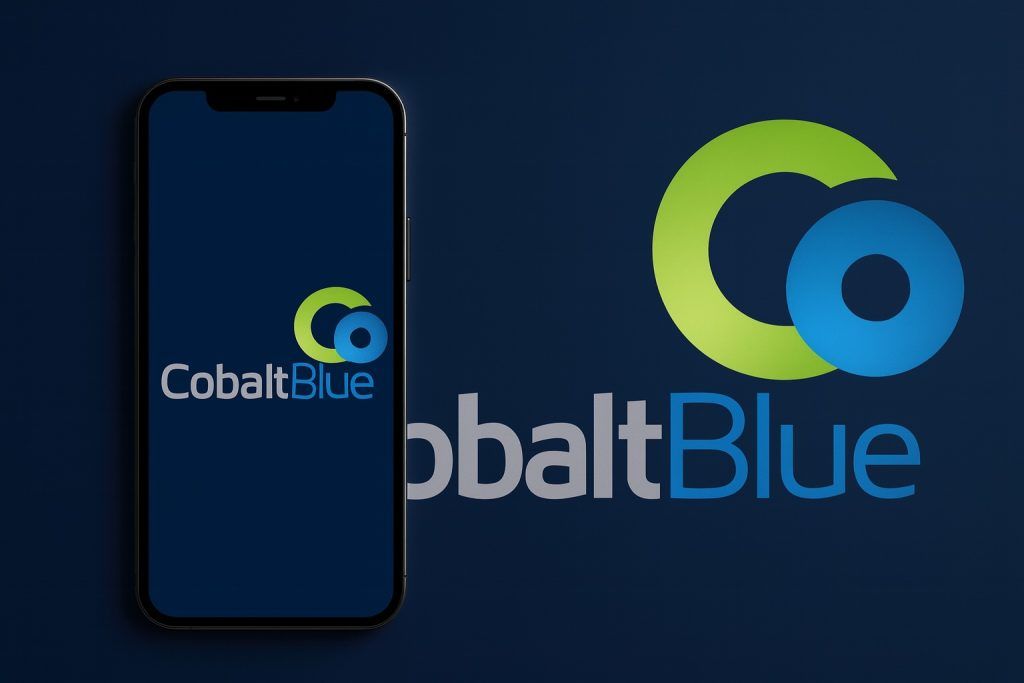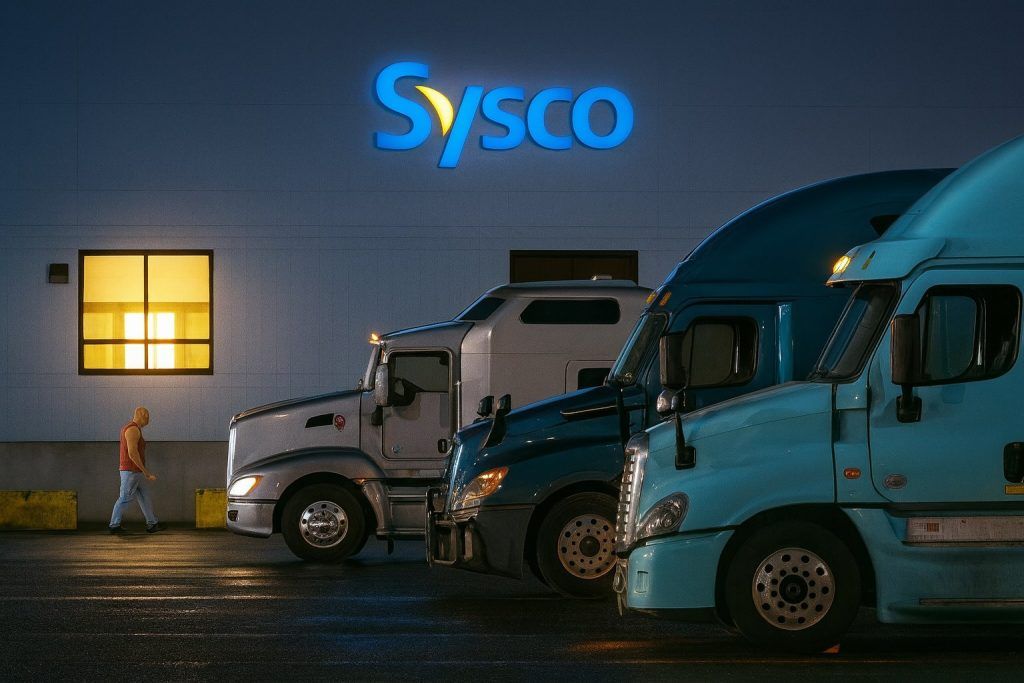- Explosive Share Surge: Leading Edge Materials Corp’s stock soared over 80% on the London market in early October 2025 (and ~28% on the TSX-V) after a flurry of positive news [1]. The share price hit multi-month highs around CA$0.30, up roughly 43% over two weeks [2], before settling near CA$0.27 on 7 October [3]. Traders piled in on optimism around the company’s strategic projects.
- Rare Earths Project Milestone: The company advanced its flagship Norra Kärr heavy rare earth element (HREE) project in Sweden, submitting final supplementary data to secure a 25-year mining lease [4]. Norra Kärr is one of Europe’s richest dysprosium and terbium deposits, and its progress comes as Europe races to cut reliance on Chinese rare earth supplies [5].
- Graphite Mine Revival: Leading Edge’s Woxna Graphite mine in Sweden – one of the few fully built graphite mines in the West – is being primed for a restart amid booming EV battery demand. Global natural graphite needs are projected to surge ~140% by 2030, requiring dozens of new mines [6]. Woxna’s established infrastructure (4 deposits, >1Mt contained graphite) positions it as a key local source for European battery anodes [7].
- Insider Backing & Funding: The company remains pre-revenue (net loss ~CA$0.61M last quarter [8]) but is financially shored up after raising CA$2.84M in August. Notably, insiders – including director Eric Krafft – purchased ~10.7M shares at CA$0.16, with Krafft boosting his stake to ~38% [9]. This sizable insider buying (over CA$1.5M) signals confidence in the company’s prospects.
- Analyst & Industry Outlook: Analysts note the high stakes: TipRanks’ AI analyst flags zero revenue and ongoing losses as challenges, but acknowledges that successful execution of the rare earth and graphite projects could unlock significant upside [10]. The broader critical minerals sector is red-hot – governments are backing projects to secure supply. In Europe, the new Critical Raw Materials Act promises faster permits for strategic mines, while allied nations are funding mines and even taking equity stakes in rare earth ventures [11] [12]. All this bodes well for Leading Edge if it can deliver on its projects.
Stock Soars on Critical Minerals Momentum
Leading Edge Materials’ stock has been on a tear, outperforming the broader market amid a rush into battery metal and rare-earth equities. On 6 October 2025, shares spiked around 27% in Toronto (TSX-V: LEM) to CA$0.30, and its London listing jumped over 80% in a single day [13], as investors reacted to the company’s latest updates. This rally continued a broader upward trend – the stock is up roughly 170% year-on-year, rebounding from 52-week lows of around CA$0.09 last winter to approach the year’s highs (CA$0.37) [14]. Such volatility is not unusual for junior mining stocks, but the recent gains reflect renewed optimism around the company’s role in Europe’s critical minerals supply chain.
Analysts note that momentum and speculative interest have gripped many critical material stocks in 2025. U.S.-focused rare earth players like MP Materials and USA Rare Earth saw their shares skyrocket after securing government support [15]. In Leading Edge’s case, the catalysts have been company-specific developments – notably progress on its Swedish mining projects – against the backdrop of Europe’s push for supply independence. The stock’s three-day surge in early October came on heavy trading volumes and put the market cap near CA$65–70 million, a remarkable rise for a company at development stage. It will be exciting to watch whether the stock’s high-octane rally continues or cools off as the news is digested.
Technical signals turned bullish during the run-up – short-term moving averages flipped upward, and trading activity spiked. Some observers caution that after such a steep climb (the share price fluctuated 40% intraday on 6 Oct [16]), a breather or pullback is possible. Indeed by 7 October the stock consolidated around CA$0.27–0.28 [17]. Still, the recent breakout highlights investors’ enthusiasm for any firm with assets tied to the electric vehicle and renewable energy supply chain. Leading Edge Materials has squarely entered that spotlight, thanks to its two main projects addressing Europe’s EV battery and rare-earth magnet needs.
Norra Kärr Rare Earth Project Back on Track
One of the biggest drivers behind the company’s surge is the tangible progress at Norra Kärr, Leading Edge’s 100%-owned heavy rare earth element project in southern Sweden. On 22 September 2025, the company announced it had submitted supplementary environmental and technical information to Swedish authorities as part of its application for an Exploitation Concession (mining lease) at Norra Kärr [18]. This marks a crucial step toward finally securing a 25-year mining permit. The additional documentation addresses questions from regional regulators about environmental impacts, with the company noting it has “comprehensively addressed all questions” in this permitting stage [19].
Norra Kärr’s significance cannot be overstated: it is among the richest known HREE deposits in Europe, uniquely enriched in dysprosium and terbium [20] – critical ingredients for high-performance permanent magnets used in electric vehicle motors, wind turbine generators, and defence technologies. Today, these heavy rare earths are almost entirely sourced from China, which dominates every stage of the rare earth supply chain [21]. Europe’s reliance on Chinese REEs was thrown into sharp relief in 2025 when China imposed export restrictions on rare earths (part of broader trade tensions) – a move that sent prices of dysprosium and terbium soaring [22]. Although the EU negotiated a relaxation of those curbs by July [23], the episode underscored Europe’s vulnerability and added urgency to domestic projects like Norra Kärr.
“China dominates all stages of the rare earth elements supply chain… Europe relies heavily on China for HREEs,” Leading Edge noted, emphasizing the urgent need for secure European supply chains [24].
In this context, Norra Kärr is potentially a strategic game-changer. The Swedish Geological Survey (SGU) has stated the deposit is “very important for Sweden’s and the EU’s supply of rare earth metals” and one of Europe’s richest rare earth sources [25]. The project had a mining lease briefly in 2013, but it was later revoked amid environmental court appeals, meaning the current application is essentially a second attempt with a redesigned plan [26] [27]. Leading Edge’s team has spent over 15 years on Norra Kärr and recently revamped the mine plan to reduce its footprint and environmental impact. According to CEO Kurt Budge, the new approach has a 65% smaller operational footprint and avoids past plans’ most sensitive aspects, focusing only on extraction and initial processing on-site [28]. The project will also generate valuable by-products (like the industrial mineral nepheline syenite) to improve economics while reducing waste [29].
Kurt Budge struck a confident tone: “With over 15 years of development work… every aspect of the project has undergone thorough analysis. We are confident in our ability to develop Norra Kärr successfully while maintaining full environmental protection, delivering the critical heavy rare earths that European manufacturers require.” [30]. He noted active engagement with local communities to communicate how the plan has improved and to ensure benefits flow to the region [31].
If Norra Kärr can clear permitting – still an ongoing process, with an environmental permit the next major hurdle – it stands to become a cornerstone of Europe’s rare earth supply. Notably, the EU’s Critical Raw Materials Act (CRMA), adopted in 2024, could designate such a project as “strategic,” potentially fast-tracking permits and unlocking support [32]. Leading Edge has indicated it will apply for Norra Kärr to be recognised as a Strategic Project under the CRMA [33]. That status could not only expedite remaining permitting but also improve access to project financing and offtake partnerships within the EU’s framework.
For now, investors seem encouraged that Norra Kärr’s long saga is finally moving forward. Any indication of government backing or permit approvals ahead could be major catalysts. Conversely, the usual risks remain: further delays or environmental opposition could temper the market’s excitement. But as Europe tightens its resolve to secure critical minerals, Norra Kärr’s strategic value gives Leading Edge a compelling narrative – one that clearly helped ignite its stock rally.
Woxna Graphite: Preparing to Power EV Batteries
The second pillar of Leading Edge Materials’ strategy is its Woxna Graphite Mine in central Sweden. Woxna is a unique asset: a fully built, past-producing graphite mine (with an operational processing plant) that the company has maintained on “production-ready” care-and-maintenance since 2015 [34]. In essence, it can be restarted far faster than any greenfield project – a potential boon as Europe’s demand for battery-grade graphite is set to skyrocket.
Graphite is the single largest component in lithium-ion batteries by mass, used as the anode material in EV batteries. Just as with rare earth magnets, China overwhelmingly dominates graphite mining and almost 100% of battery anode production. European battery-makers currently rely on imported graphite, a dependence Brussels is keen to reduce. According to Benchmark Minerals Intelligence, global graphite demand will increase ~140% by 2030, requiring an extra 1.7 million tonnes per year – equivalent to at least 31 new mines beyond those existing [35]. Yet bringing a new mine into production can take 20+ years, far longer than building battery factories or even mines for some other minerals [36]. This supply lag has raised concerns of a graphite shortfall just as Europe’s gigafactories come online.
In a February 2025 update, Leading Edge’s CEO Kurt Budge highlighted this urgency: “Security of supply is paramount. With rising geopolitical tensions and the weaponization of trade through export restrictions, establishing regional supply chains has never been more important.” [37] Woxna, he argues, is ideally positioned to be one of those regional sources. The mine holds four exploitation licenses (Kringelgruvan and satellite deposits) with over 1 million tonnes of contained graphite in current resources [38]. Unlike a remote project, Woxna already has roads, power, and a permitted plant – a huge head start in a market where most new graphite projects are still on the drawing board.
Interest in restarting Woxna has grown lately. Leading Edge completed a preliminary economic assessment (PEA) in 2021 for a vertically integrated operation producing battery-grade anode material. That study showed robust economics (pre-tax NPV $317M, 42.9% IRR) [39], but the full downstream project would require significant investment. The company has since indicated it is pursuing a phased approach: first resume mining and flake graphite concentrate production, then consider value-added processing via partnerships. In early 2022, an in-house study examined upgrading Woxna’s plant to produce high-purity flake graphite; this plant update study is being refreshed in 2025 [40]. The goal is to have an updated business plan that could support talks on project financing, customer pre-payments or even public funding support by Sweden/EU [41].
Indeed, policy support and partnerships are lining up. The European Commission’s CRM Act explicitly encourages using existing mines like Woxna. And Sweden’s government is voicing strong support: “We have large graphite deposits in Sweden that could account for much of what we and Europe need for our cars and batteries,” Sweden’s energy minister Ebba Busch said in late 2024 [42]. This statement, alongside news that Swedish competitor Talga Group won a €70 million EU grant for a battery anode refinery [43], has boosted confidence that companies like Leading Edge could tap “Green Transition” funding for their projects. Management noted that Woxna’s restart “could be financed with Green Transition funding” given the strong alignment with EU climate and supply chain goals [44].
Leading Edge is also part of industry alliances – it’s a member of the European Battery Alliance and the European Raw Materials Alliance, signalling its intent to collaborate on the continent’s supply chain. In 2021 the company even inked a preliminary JV agreement with Australia’s Sicona Battery Technologies to produce advanced anode materials at Woxna [45] [46]. While that specific “Anode Project 2021” is on the back-burner for now [47], it remains a “future option” – essentially a blueprint for vertical integration once initial production is achieved. Sicona’s technology could enable Woxna’s graphite to be turned into next-generation silicon-graphite anodes, which fetch higher prices and improve battery performance [48] [49]. The existence of such plans underscores the long-term potential of Woxna, beyond just mining raw graphite.
In the near term, investors will be watching for concrete steps: financing arrangements, offtake agreements with battery makers, or a decision to formally restart the mine. Each would de-risk the project. Conversely, challenges include graphite price volatility and competition – China recently imposed export permits on graphite (Oct 2023), which could both constrain supply and spur non-Chinese projects, a double-edged sword. For now, Woxna is a valuable asset in Leading Edge’s portfolio, and one that complements Norra Kärr: together they target two distinct critical materials needed for Europe’s electric future.
Financials and Insider Confidence
As an exploration and development company, Leading Edge Materials is not yet generating revenue – a point potential investors must weigh. The latest quarterly results (Q3 2025) showed a net loss of CA$611,307 [50] for the three months ending 31 July 2025, narrower than the year-ago loss (~CA$822k) thanks to lower exploration expenses and some forex gains [51] [52]. Year-to-date, the loss totals ~CA$2.46M for the first nine months. Such losses are typical for junior miners in development mode, as the company’s expenditures go into permitting, studies, and maintaining its assets. As of 31 July, Leading Edge had a modest CA$0.68M in working capital on the balance sheet [53] – which by itself would not last another year of corporate and project expenses.
However, importantly, the company bolstered its treasury in August. It completed a non-brokered private placement of units at C$0.16, raising approximately C$2.84 million gross [54]. This cash infusion, which closed on 15 August 2025, improves the short-term funding picture. Moreover, the financing was notable for who participated: insiders took a significant chunk. Director Eric Krafft alone subscribed for 10,666,000 units (~C$1.7M worth) [55]. This lifted his ownership to roughly 38% of the company’s common shares [56], solidifying his position as a control person. In total, insiders (management and directors) accounted for over CA$1.5 million of the raise – a strong signal of internal belief in the projects’ prospects. Such insider buying is often viewed positively, indicating that those with the most knowledge of the company are willing to increase their stake. Indeed, an earlier analysis in 2025 highlighted that insiders had been steadily accumulating shares, aligning with shareholders’ interests.
The units issued also included warrants (1:1 with shares) exercisable at C$0.32 for four years [57]. This means if the project advances and the stock rises further, the company could later receive another ~$5.7M if all warrants are exercised – a potential future source of funding. In the meantime, management has stated the August proceeds will go toward its Swedish and Romanian projects and general corporate needs [58]. At the current burn rate, the cash on hand (around C$3.8M as of mid-Sept [59] after the financing) should fund more than a year of basic overhead. However, to actually build or restart any mine, substantially more capital will be required. The company openly acknowledges it “will need additional capital” to restart Woxna, develop Norra Kärr, or undertake drilling in Romania [60]. This could involve strategic partnerships, government grants, debt financing, or further equity raises in the future.
From a market valuation perspective, Leading Edge’s roughly C$65M market cap suggests investors anticipate significant future value creation if one or both flagship projects come to fruition. The enterprise value (EV) is slightly lower (it has no debt), around C$62M. In essence, the market is pricing in the option value of Norra Kärr and Woxna becoming producing assets in a few years. By comparison, established producers in the rare earth or graphite space often have much larger valuations – but they also have revenue. Leading Edge must navigate the path to production carefully, ensuring it can finance development without over-diluting shareholders. The presence of a deep-pocketed insider like Krafft can be a double-edged sword: positive, because he can backstop the company (and has a long-term view), but also meaning public float is smaller and the company’s fate is closely tied to one major holder.
So far, the financial strategy appears to be prudent incremental advancement: keep spending in check, inch projects forward, and leverage government or strategic support where possible. The company has been successful in obtaining some grants – for example, in June 2025 it announced an expectation of about C$4 million in public funding (likely related to its projects) [61] [62]. This indicates it’s tapping non-dilutive sources to complement shareholder funds. Also worth noting, the general market environment for mining financing in 2025 has been improving due to the critical minerals hype – investors and governments are more willing to fund projects that promise to alleviate supply chain bottlenecks. Leading Edge’s ability to raise money in August, largely from insiders at a premium to earlier prices, reflects that trend and insider conviction.
Expert Commentary and Outlook
Market commentators largely agree that Leading Edge Materials sits at the right place at the right time – but also caution that execution risk is high. The company has essentially two lottery tickets in the critical minerals sweepstakes: one in rare earths, one in graphite. If either becomes a producing mine, shareholders could be handsomely rewarded given the immense demand and strategic premiums for these resources. If permitting or funding hurdles prove insurmountable, the projects could stall.
Financial analysts note the company’s currently thin financials. TipRanks, for instance, rates LEM stock as “Underperform” via its AI-driven analysis, pointing to the lack of revenues and ongoing losses as causes for concern [63]. “Leading Edge Materials faces significant financial challenges with no revenue and increasing losses… Valuation remains unattractive due to negative earnings,” the TipRanks report observed [64]. At the same time, it acknowledged that “strategic developments in key projects offer potential upside if executed successfully.” [65] In other words, there is a speculative aspect: the stock’s value will be determined by whether management can turn these assets into cash-generating operations in the coming years. Until then, volatility will likely remain high – with big swings on news, both positive and negative.
Sector experts also emphasise how policy and geopolitics are shaping the outlook. The global race for critical minerals security is clearly benefitting companies like Leading Edge. In the rare earth arena, Western governments are directly investing: the U.S. Department of Defense took equity in MP Materials, and the White House is in talks with developers [66] [67]. In Europe, while direct investment is less common, the EU is rolling out supportive policies. The Critical Raw Materials Act sets targets for the EU to produce 15% of its annual rare earth demand and 10% of its battery materials demand domestically by 2030, and to fast-track “strategic” projects with permitting timelines of under 2 years. If Norra Kärr is approved and designated strategic, it could benefit from this push – possibly enjoying expedited permitting and attracting European Investment Bank financing or loan guarantees. Similarly, for graphite, national efforts (like Sweden highlighting domestic mines) and EU funding programs (Innovation Fund, Horizon Europe, etc.) could provide grants or subsidies for processing facilities that would source from Woxna.
Industry commentators often mention Leading Edge alongside peers in Europe’s critical minerals space. For rare earths: companies like Rainbow Rare Earths (Burundi/South Africa projects) or Defense Metals (Canada) are also vying to supply ex-China material. But Norra Kärr’s heavy REE profile makes it stand out – most Western projects are rich in light rare earths, whereas Norra Kärr could become a rare non-Chinese source of dysprosium. For graphite: competitors include Talga (developing a mine and anode refinery in Sweden), Nouveau Monde (Canada), and several smaller players in Africa. The fact that Talga secured a major EU grant is a positive read-through, indicating political will to fund local graphite production. It also means competition – the race is on to be the first scaled European anode producer. Woxna doesn’t aim to produce coated anodes immediately, but if it restarts flake graphite production, it could either partner with an anode maker or gradually integrate downstream.
From an environmental and regulatory standpoint, both projects have challenges to manage. Norra Kärr faced past opposition due to its location near a natural reserve and fears about impact on water bodies. Leading Edge’s redesigned plan (smaller footprint, no on-site tailings storage) is intended to mitigate these concerns. It will undergo a rigorous Environmental Permit process – success is not guaranteed, but the company’s proactive approach and Sweden’s own need for these materials could tilt the balance. Woxna, meanwhile, is fully permitted for mining up to 100k tons per year of ore [68], but any chemical processing to make battery-grade graphite might require additional permits and community engagement, especially regarding waste management and purification processes.
Overall, the geopolitical winds are in Leading Edge’s favour. Europe’s energy transition and tech sovereignty goals align perfectly with what Norra Kärr and Woxna offer. As one mining publication put it, “Leading Edge is positioning itself as a cornerstone of the EU’s critical minerals push”, advancing assets that could feed Europe’s EV and renewable supply chains [69] [70]. This narrative has clearly captivated the market in recent weeks.
Going forward, key events to watch include: Swedish authorities’ decision on the Norra Kärr mining lease (and any feedback on the new info submitted), progress on Norra Kärr’s environmental permit application, updates on Woxna’s restart study (due in Q2 2025, which may outline costs and timelines), any partnership or off-take agreements (e.g. with magnet manufacturers or battery producers), and additional funding news (grants or strategic investors). Each of these could be stock-moving. The next earnings release (expected ~24 Sep 2025 for the year-to-date results [71]) might also shed light on plans and whether the recent capital raise is being deployed effectively.
In summary, Leading Edge Materials has transformed from a quiet junior miner into a buzzy strategic player in the span of months, riding the wave of Europe’s critical minerals awakening. The stock’s octane-fueled jump reflects both genuine achievements – like advancing Norra Kärr – and the market’s hunger for exposure to EV battery and rare earth themes. Investors should brace for continued volatility, but if the company keeps hitting milestones, it could justify the hype. As TipRanks’ analysis implies, the current valuation already prices in a good deal of success [72]. Delivering that success now falls to Leading Edge’s execution and the support it can garner. The coming quarters will be crucial in determining whether this is the start of an enduring uptrend underpinned by fundamental progress, or a speculative spike that needs firm news to sustain. For now, the company sits at the leading edge of Europe’s effort to build a secure supply of critical raw materials – a position that, as recent days have shown, can be very exciting indeed.
Sources: Yahoo Finance; Leading Edge Materials Corp. press releases [73] [74]; GlobeNewswire and Nasdaq news feeds [75] [76]; TS2.tech analysis and TipRanks insights [77]; Financial Times; Investing.com [78]; European Commission reports; and industry news from Mining.com and Reuters.
References
1. stockinvest.us, 2. stockinvest.us, 3. www.investing.com, 4. www.globenewswire.com, 5. www.globenewswire.com, 6. leadingedgematerials.com, 7. leadingedgematerials.com, 8. view.news.eu.nasdaq.com, 9. leadingedgematerials.com, 10. www.tipranks.com, 11. view.news.eu.nasdaq.com, 12. ts2.tech, 13. stockinvest.us, 14. simplywall.st, 15. ts2.tech, 16. stockinvest.us, 17. www.investing.com, 18. www.globenewswire.com, 19. www.globenewswire.com, 20. www.globenewswire.com, 21. www.globenewswire.com, 22. www.globenewswire.com, 23. www.globenewswire.com, 24. www.globenewswire.com, 25. www.globenewswire.com, 26. www.cruxinvestor.com, 27. www.cruxinvestor.com, 28. www.globenewswire.com, 29. www.cruxinvestor.com, 30. www.globenewswire.com, 31. www.globenewswire.com, 32. www.cruxinvestor.com, 33. www.cruxinvestor.com, 34. view.news.eu.nasdaq.com, 35. leadingedgematerials.com, 36. leadingedgematerials.com, 37. leadingedgematerials.com, 38. leadingedgematerials.com, 39. leadingedgematerials.com, 40. leadingedgematerials.com, 41. leadingedgematerials.com, 42. leadingedgematerials.com, 43. leadingedgematerials.com, 44. leadingedgematerials.com, 45. www.prnewswire.com, 46. www.prnewswire.com, 47. leadingedgematerials.com, 48. www.prnewswire.com, 49. www.prnewswire.com, 50. view.news.eu.nasdaq.com, 51. view.news.eu.nasdaq.com, 52. view.news.eu.nasdaq.com, 53. view.news.eu.nasdaq.com, 54. leadingedgematerials.com, 55. leadingedgematerials.com, 56. leadingedgematerials.com, 57. leadingedgematerials.com, 58. leadingedgematerials.com, 59. iocharts.io, 60. view.news.eu.nasdaq.com, 61. simplywall.st, 62. simplywall.st, 63. www.tipranks.com, 64. www.tipranks.com, 65. www.tipranks.com, 66. ts2.tech, 67. ts2.tech, 68. leadingedgematerials.com, 69. www.cruxinvestor.com, 70. www.cruxinvestor.com, 71. www.investing.com, 72. www.tipranks.com, 73. www.globenewswire.com, 74. leadingedgematerials.com, 75. view.news.eu.nasdaq.com, 76. view.news.eu.nasdaq.com, 77. www.tipranks.com, 78. www.investing.com
